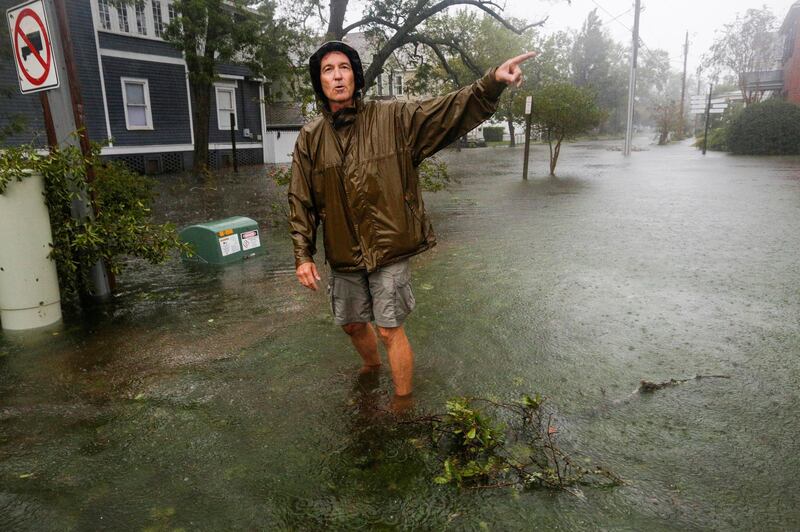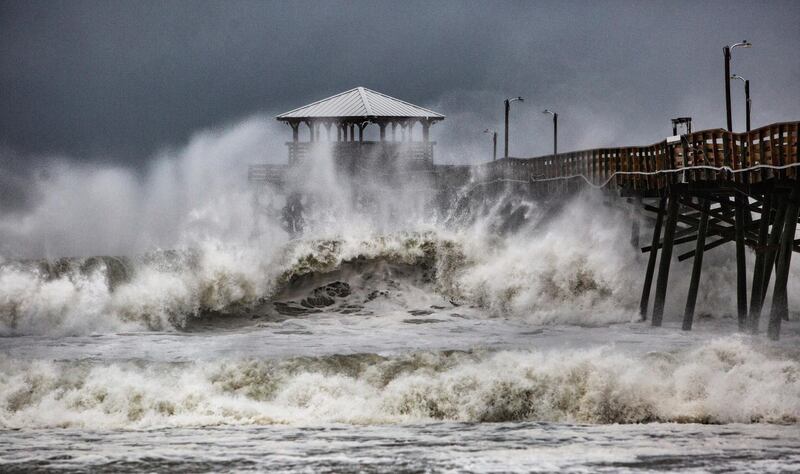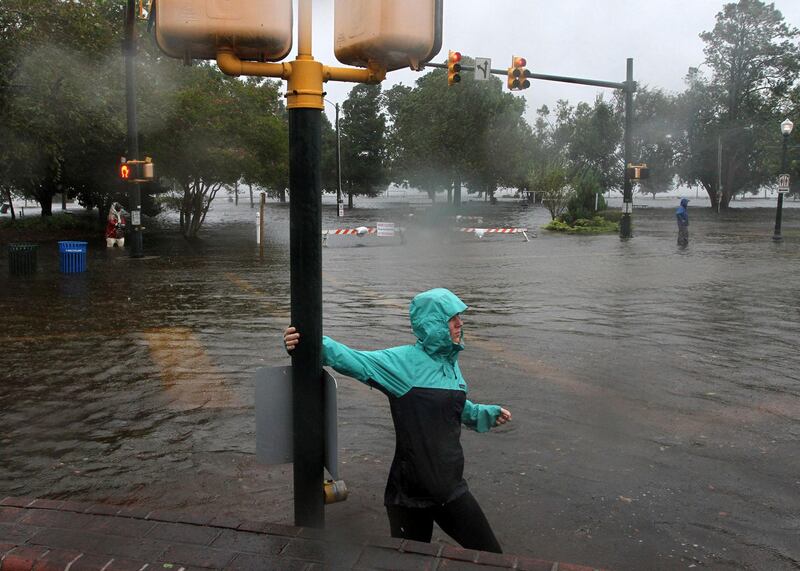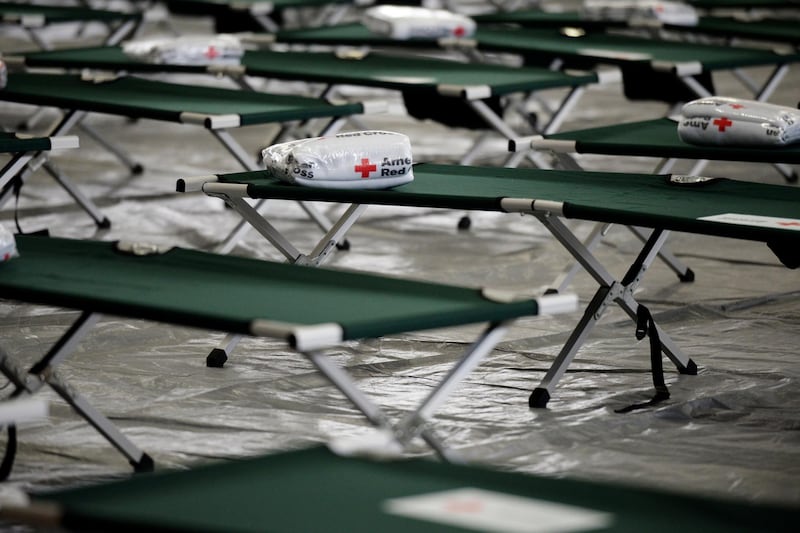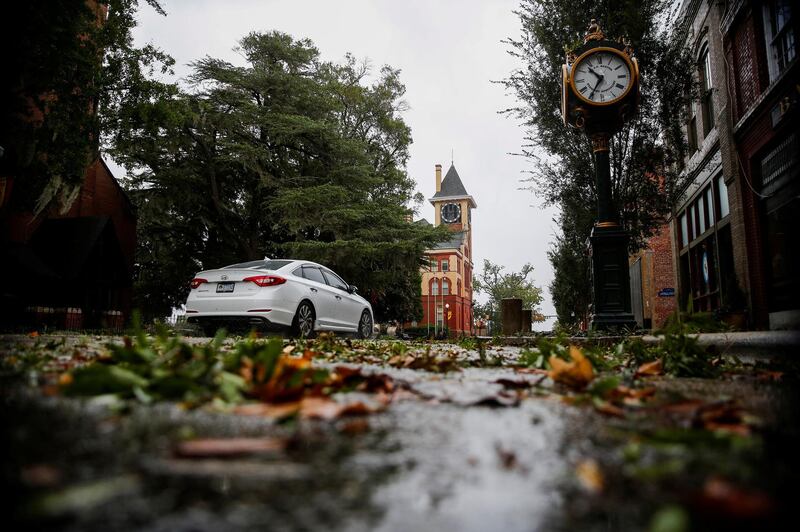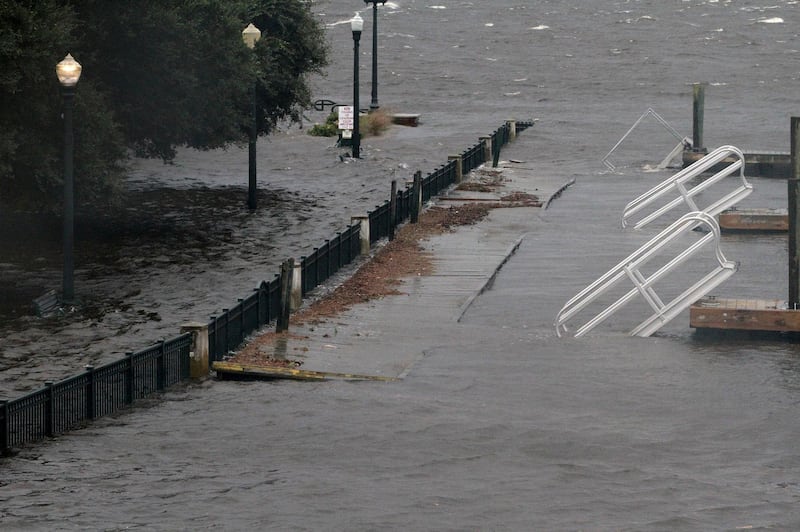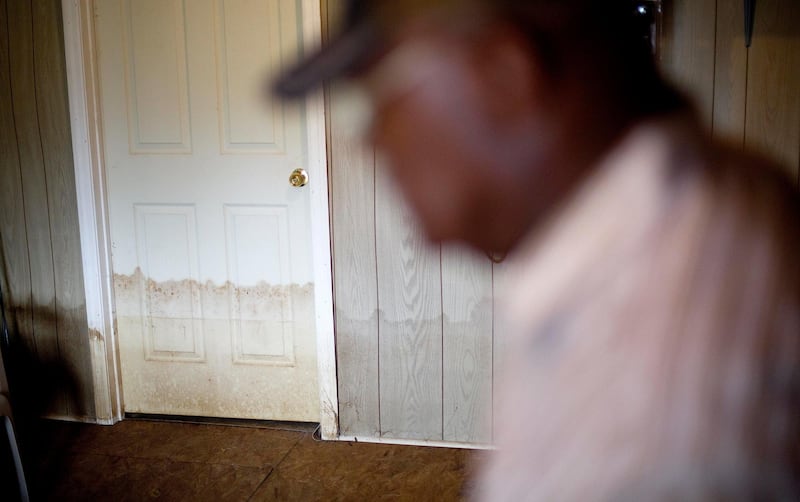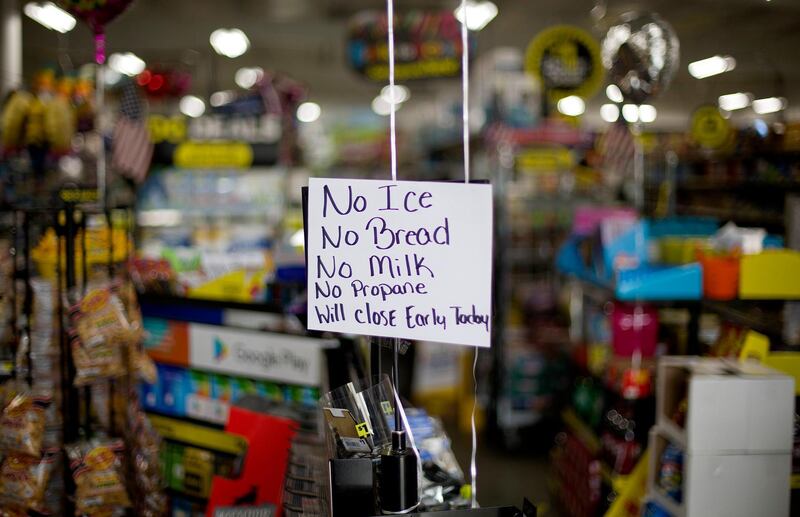With at five deaths, flooding and power cuts affecting nearly a million homes, storm Florence has battered the coastline of the southeast US with non-stop rain and winds since making landfall on Friday.
Several cities around the Carolinas were deluged with more than 60 centimetres of rainwater, and forecasters warned that if that hits a metre it could trigger flooding well inland early next week as the storm abates.
The hurricane was downgraded to a tropical storm on Friday evening, but it sustained wind speeds of up to 110 kilometres per hour as it moved towards the coast at about 7 kilometres an hour.
Five people have been killed and authorities fear the toll will rise as the tropical storm crawls westward on Saturday across South Carolina.
North Carolina Governor Roy Cooper called the storm an "uninvited brute" that could wipe out entire communities.
"The fact is this storm is deadly and we know we are days away from an ending," Mr Cooper said.
At 645 kilometres wide, Florence pounded away at the coast and torrential downpours brought surging seas. Rescue crews used boats to reach more than 360 people besieged by rising waters in New Bern, North Carolina. Dozens more were rescued from a collapsed motel.
Florence flattened trees, buckled buildings and crumpled roads. The storm knocked out power to nearly 930,000 homes and businesses and the number could keep rising.
A mother and baby were killed when a tree fell on a house, according to a tweet from Wilmington police. Another woman died in Pender County, north of Wilmington. A 77-year-old man was knocked down by the wind and died after going out to check on his hunting dogs, Lenoir County authorities said while the governor's office said a man was electrocuted while trying to connect extension cords in the rain.
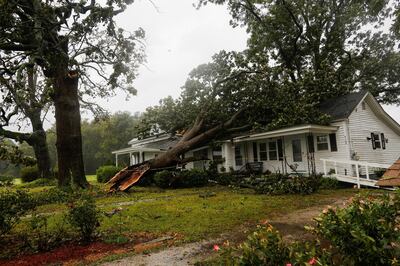
Storm surges – the bulge of ocean water pushed ashore by the hurricane – were as high as three metres.
Shaken after seeing waves crashing on the Neuse River just outside his house in New Bern, restaurant owner and hurricane veteran Tom Ballance wished he had left.
"I feel like the dumbest human being who ever walked the face of the Earth," he said.
______________
Read more :
Hurricane Florence latest: Five dead as storm drenches the Carolinas
‘Big and vicious’ Hurricane Florence closes in on the Carolinas
East Coast military bases brace for Florence
Super Typhoon Mangkhut barrels towards Hong Kong after slamming into the Philippines
______________
After reaching a Category 4 peak and wind speeds of 225 kilometres per hour earlier in the week, Florence made landfall as a Category 1 hurricane at 7:15am at Wrightsville Beach, not far from the South Carolina line. It came ashore along a mostly boarded-up, emptied-out stretch of coastline.
But it was clear that worries were really about the water, not the wind. Morehead City, North Carolina, took 58 centimetres of rain by Friday night with more torrents on the way.
Florence's forward movement during the day slowed to a near-standstill – sometimes it was going no faster than a human can walk – and that enabled it to pile on the rain.
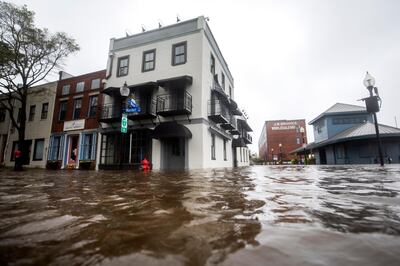
The flooding soon spread into South Carolina, swamping places like North Myrtle Beach, in a resort area known for its white sands and golf courses.
For people living inland in the Carolinas, the moment of maximum peril from flash flooding could arrive days later, because it takes time for rainwater to drain into rivers and for those streams to crest.
Preparing for the worst, about 9,700 National Guard troops and civilians were deployed with high-water vehicles, helicopters and boats.
Authorities warned, too, of the threat of mudslides and the risk of an environmental disaster from floodwaters washing over industrial waste sites and farms.
Florence could become a major test for the Federal Emergency Management Agency, which was criticised as slow and unprepared last year for Hurricane Maria in Puerto Rico, where the death toll was put at nearly 3,000.
The National Hurricane Centre said Florence will eventually break up over the southern Appalachians and make a right hook to the northeast, its rainy remnants moving into the mid-Atlantic states and New England by the middle of next week.
Meteorologist Ryan Maue of weathermodels.com said Florence could drop 68 trillion litres of rain over a week on North Carolina, South Carolina, Virginia, Georgia, Tennessee, Kentucky and Maryland. That's enough to cover the entire state of Texas – the second largest US state – with nearly 10 centimetres of water, he calculated.
In Jacksonville, North Carolina, firefighters and police fought wind and rain as they went door to door to pull more than 60 people out of the Triangle Motor Inn after the structure began to crumble and the roof started to collapse.
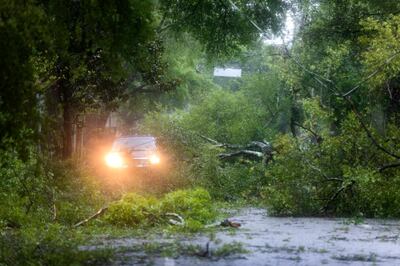
In New Bern, population 29,000, flooding on the Neuse River left 500 people in peril.
"WE ARE COMING TO GET YOU," the city tweeted around 2am on Friday. "You may need to move up to the second story, or to your attic, but WE ARE COMING TO GET YOU."
Currently ~150 awaiting rescue in New Bern. We have 2 out-of-state FEMA teams here for swift water rescue. More are on the way to help us. WE ARE COMING TO GET YOU. You may need to move up to the second story, or to your attic, but WE ARE COMING TO GET YOU. #FlorenceNC
— City of New Bern (@CityofNewBern) September 14, 2018
Boat teams including volunteers rescued some 360 residents, including Sadie Marie Holt, 67, who first tried to row out of her neighbourhood during Florence's assault.
"The wind was so hard, the waters were so hard ... We got thrown into mailboxes, houses, trees," said Ms Holt, who had stayed at home because of a doctor's appointment that was later cancelled. She was rescued by a boat crew while 140 more awaited assistance.
Ashley Warren and boyfriend Chris Smith managed to paddle away from their home in a boat with their two dogs.
"Honestly, I grew up in Wilmington. I love hurricanes. But this one has been an experience for me," she said. "We might leave."
